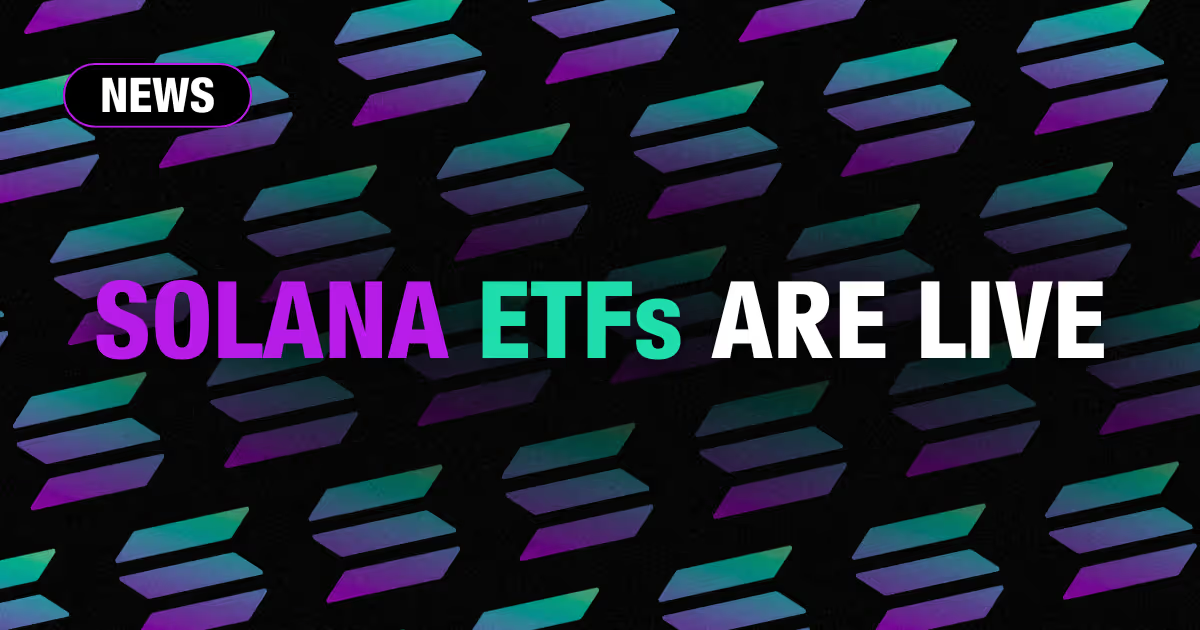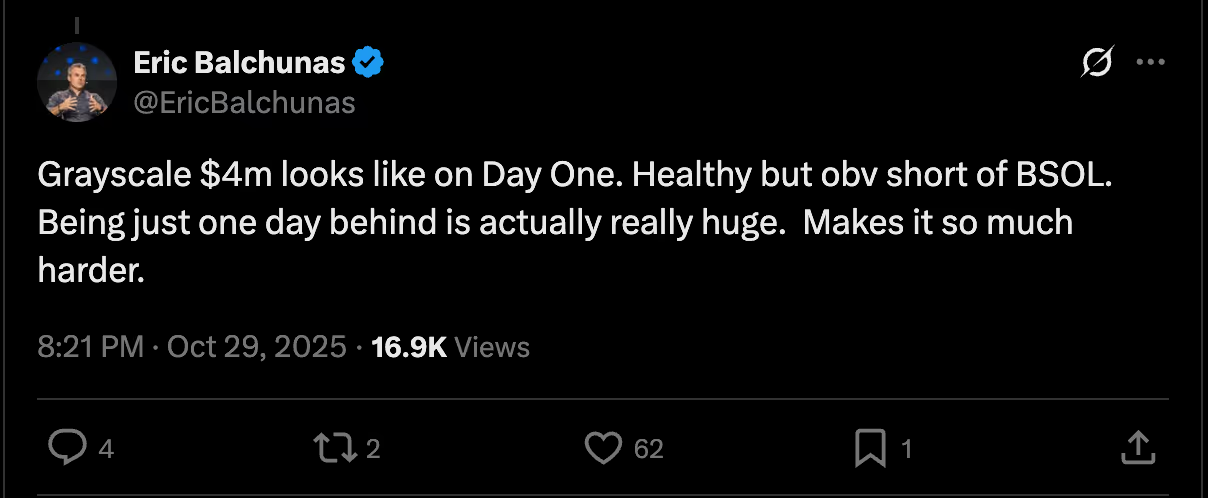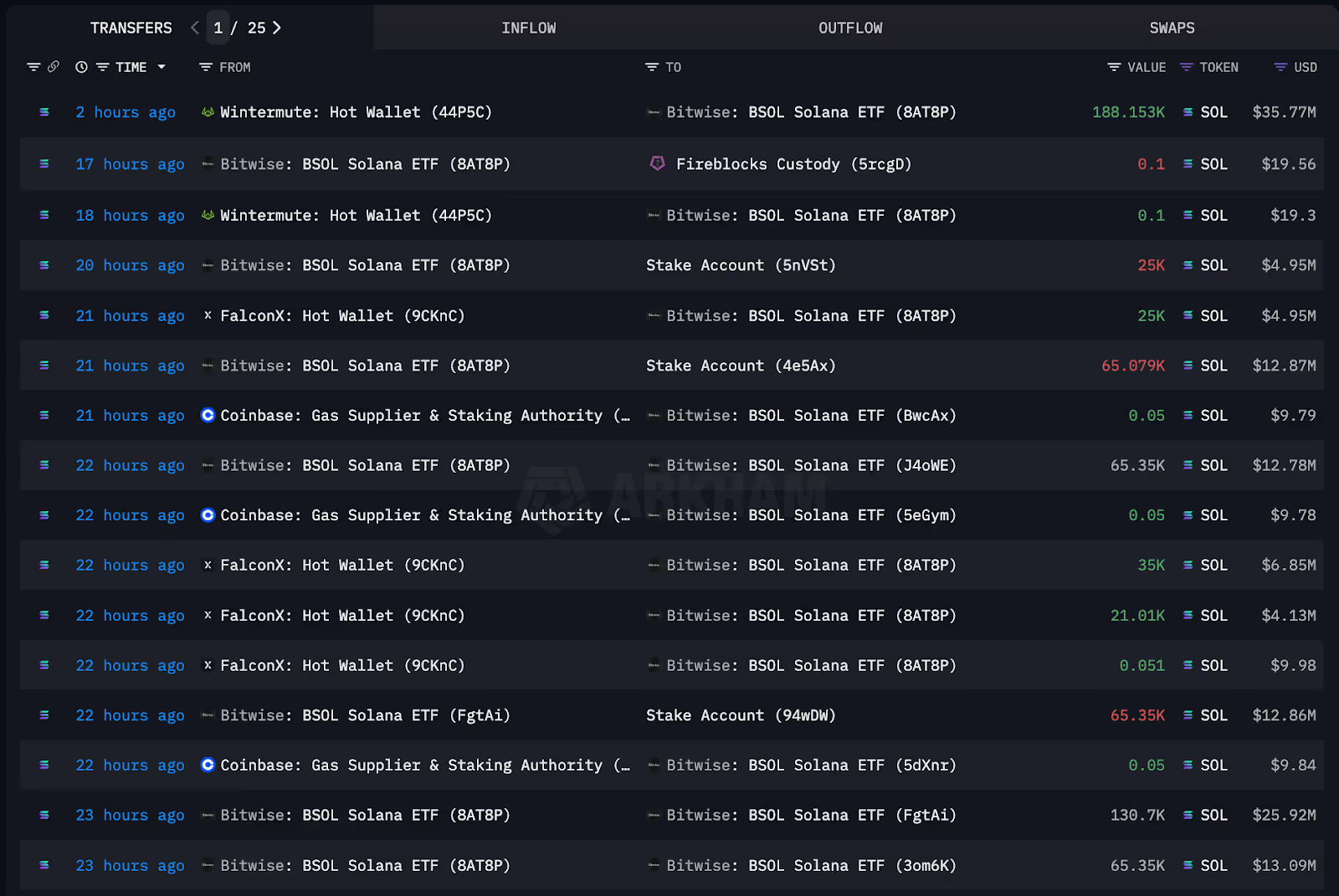November 3, 2025
at
5:15 pm
EST
MIN READ
Solana ETFs Are Live - Here’s How To Track Them

Two spot Solana ETFs launched last week and are off to a strong start with healthy inflows, even as the Bitcoin and Ethereum spot ETFs record outflows. Bitwise’s BSOL and Grayscale’s GSOL launched on the 28th and 29th October respectively.
BSOL recorded inflows of $69.5 million on its first day, $46.5 million on its second day and $36.5 million on its third day. GSOL, on the other hand, had modest inflows of $1.4 million and $780k.
Bloomberg ETF analyst Eric Balchunas posted on X stating that BSOL’s first-mover advantage over GSOL ‘makes it so much harder’ for the Grayscale product. BSOL’s management fees are 0.2% whilst GSOL’s are 0.35%.

The two new spot Solana ETFs are not the first Solana ETF products. In July, the REX-Osprey SOL Staking ETF launched under the ticker SSK. SSK is technically a spot Solana ETF but it does not hold, or stake, all of its Solana directly with some of its holdings being via other Solana ETPs.
Spot Solana ETFs from Fidelity, VanEck and 21Shares are slated to launch soon. As more products enter the market, keeping track of their daily inflows and outflows will be a key metric for Solana traders.
ETF flows indicate investor sentiment and potential future demand/supply for the underlying assets. Large flows can create temporary price pressure and impact liquidity, which traders can use in their strategies
Crypto data provider The Block has launched a dedicated tracking page for Solana ETFs, offering an overview of key info, fees, and assets under management. However, this resource is not fully up to date at the time of writing. Alternatively, AI-powered crypto investment and research platform SoSoValue has a dashboard where you can track Solana ETF performance.
The Arkham Intel Platform provides powerful tools for monitoring the wallets of ETF issuers. The platform has labelled entity pages for Bitwise, Grayscale and REX Shares, allowing users to observe the movement of SOL tokens in real-time. For an explanation on how to make sense of crypto ETFs, read our guide here.

It is important for traders to understand the concept of T+1 settlement when it comes to crypto ETFs. In traditional finance, trades are settled one business day after the transaction (T+1). This means that the on-chain reflection of ETF inflows and outflows is not immediate. For instant "alpha," it can sometimes be more advantageous to monitor off-chain sources, such as the ETF issuers' own websites and reputable financial news outlets, which will report on flows before they are fully settled on the blockchain.
However, as always with crypto, the blockchain is the source of truth and should always be used to verify movements, especially now that institutions like BlackRock, Fidelity, Grayscale, VanEck and Bitwise have multiple crypto ETFs on offer.





















































































































































































































































.png)